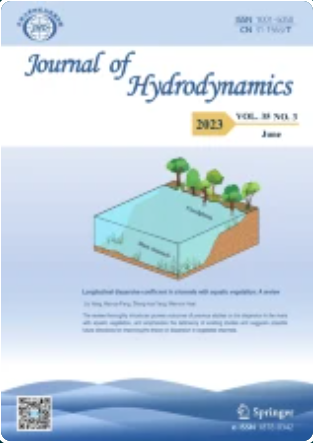Actuator line method flow structures and morphology interaction around a monopile-supported tidal stream turbine using the actuator line–Sediment transport coupling simulation
Abstract
Marine turbines have been extensively utilized to harness tidal stream energy from free-flowing tides and currents. However, the assessment of the influences of these marine structures on the surrounding environment is still in its early stage. In this study, a numerical model that couples hydrodynamics and sediment transport is developed to simulate the scour processes around a monopile-supported horizontal axial tidal stream turbine under steady currents. The flow characteristics are calculated by solving the 3-D Navier-Stokes equations with the k -ω shear stress transport (SST) turbulence model for closure. The simulation of sediment bed elevation is achieved by solving the Exner equation. The turbine rotor is parameterized using the actuator line method. The developed model is validated against wake velocity and scour depth measurement obtained from previous literature, showing a good agreement. Subsequently, the effects of tip clearance on the flow characteristics around the turbine model on a rigid flatbed are examined. Finally, the scour processes of the turbine model are presented, along with the vortex system within the scour hole. The numerical model proposed in this study has the potential to contribute to the understanding of the scour mechanism of the tidal stream turbines.

 求助内容:
求助内容: 应助结果提醒方式:
应助结果提醒方式:


